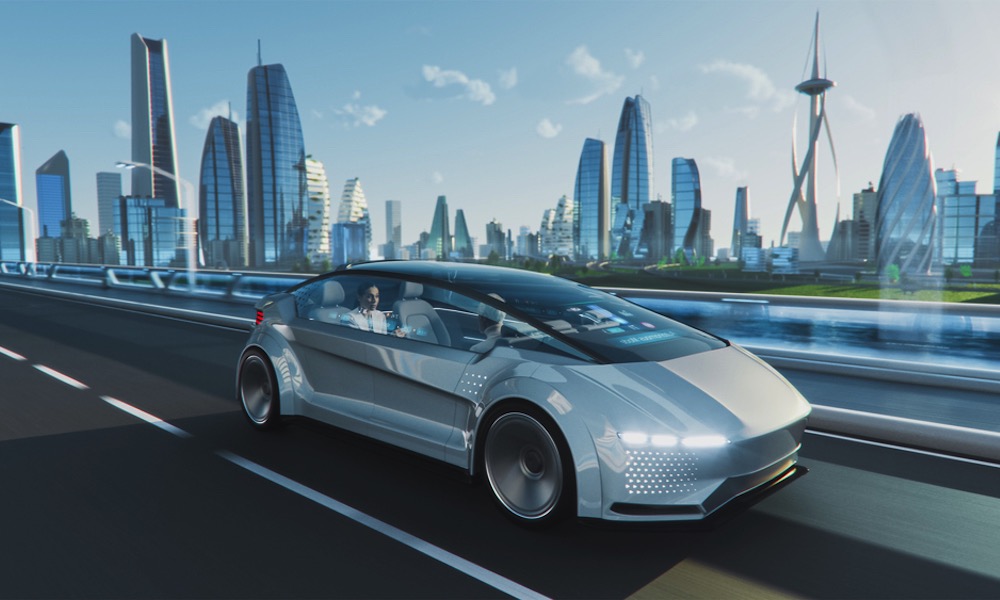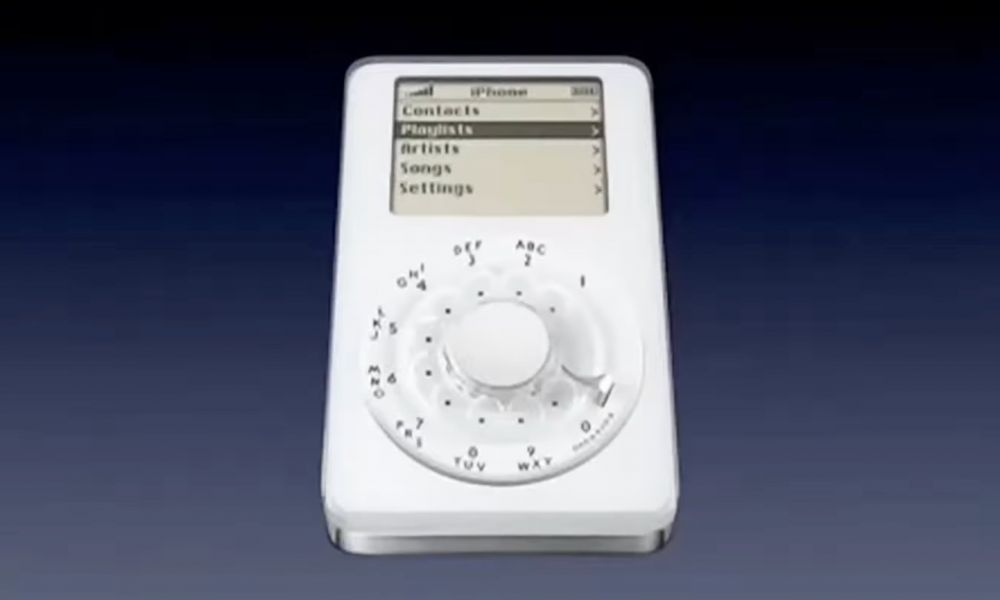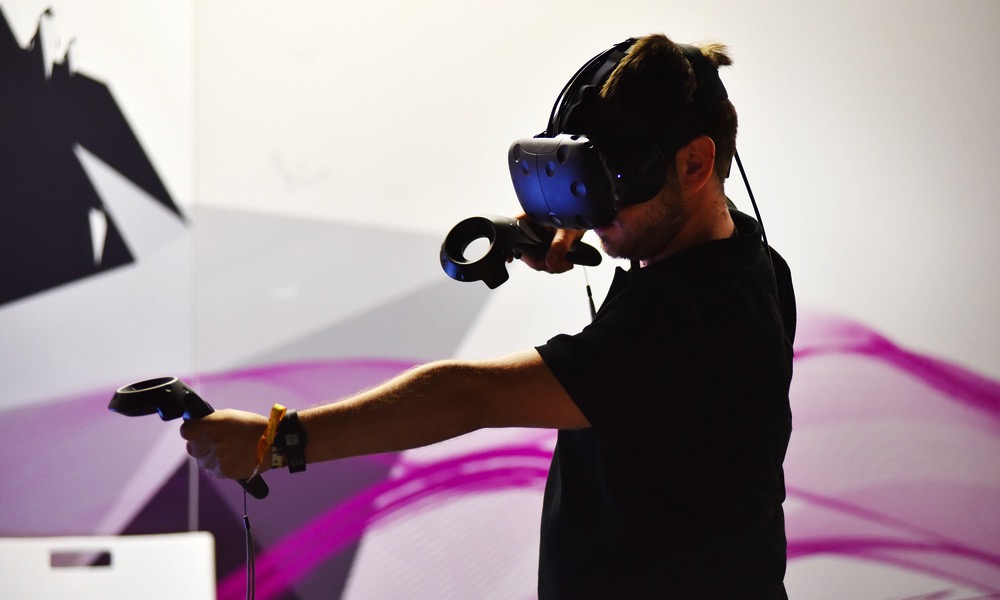Apple Car and AR Headset Could Be Announced Years Before Available
 Credit: Gorodenkoff / Shutterstock
Credit: Gorodenkoff / Shutterstock
Toggle Dark Mode
In today’s connected world, it’s become harder than ever for even a multi-trillion dollar company like Apple to keep its plans a secret, especially when those plans involve breakthrough technological innovations like a fully autonomous self-driving car and a mixed-reality headset that’s poised to change the future of mobile computing.
So, it’s no surprise that these have become Apple’s worst-kept secrets in recent years. Keeping a non-redesigned Apple Watch under wraps is a walk in the park compared to those products that break entirely new ground. After all, Apple has to conduct research, file patents, and hire hundreds of engineers, designers, and scientists to pull off something that it’s never done before.
Of course, the same thing could have been said about the first iPhone, but that also arrived at a time when the internet was a very different place — and people weren’t paying nearly as much attention to Apple as they are today. Still, there were certainly sporadic rumours that Apple was working on some kind of phone. Pundits had even predicted a device called the “iPhone” months before there was any solid evidence that Apple was working on such a product.
Mind you, the “iPhone” wasn’t exactly a tough guess for a cell phone that would come from the company that produced the iMac and the iPod. However, it’s fair to say that the name was the only thing that industry watchers got right. The device that actually arrived was not at all like what we expected.
In fact, the fictitious device that Steve Jobs jokingly shared that day was likely much closer to what most of the rumour mill had been expecting up to that point.
Still, when Steve Jobs took the stage to show off the first iPhone in January 2007, he did so six months before anybody would be able to get their hands on it. Except for a privileged few who were amongst private audiences with Apple’s marketing VP Greg Joswiak where they didn’t even get to hold it but only poke at the screen a bit.
It was the first time Apple had ever pre-announced a major new product so far ahead of time, and Jobs was rather candid about his reasons for it. He knew that once Apple filed its documents with the FCC, the secret would be out, and Apple wanted to be the ones to show it off before that happened.
We’re announcing it today because with products like this we gotta go and get FCC approval, which takes a few months, and we thought it would be better if we introduced this rather than asking the FCC to introduce it for us.
Steve Jobs
Seven years later, Apple did the same thing with the Apple Watch, and most likely for the same reasons. Not only did the wearable require FCC approval, but it also needed to be checked out by the FDA, both of which would have almost certainly resulted in public scrutiny. The Apple Watch was announced in the fall of 2014 but didn’t go on sale until April 2015 — an even longer lead time than the iPhone.
The first iPad was also announced three months before it went on sale in early 2010, and even Apple’s original HomePod was unveiled almost a year ahead of time — June 2017 to February 2018. Although part of that gap may have been simply due to manufacturing and supply chain issues, it was clear that Apple intended to announce it at least 3–6 months ahead of time.
Car and Headset Challenges
So, it shouldn’t be all that surprising to hear that this trend will continue with what could ultimately be the two biggest new Apple products since the original iPhone came along. After all, if even the HomePod warrants a pre-announcement, what does that say about the Apple Car or the “Apple View” mixed-reality headset?
In his latest Power On Newsletter, Bloomberg’s Mark Gurman says that we can expect even longer delays between the time that Apple announces these new products and the date that we can actually get their hands on them.
I expect the gap between the introduction of Apple’s first headset—scheduled for as early as next year—to be sizeable and perhaps rival that of the original Apple Watch.
Mark Gurman
At 227 days between its debut and its availability, the original Apple Watch had the longest pre-announcement lead of any Apple device. The products Apple is working on now are considerably more complex and expected to have to jump through even more regulatory loops.
Gurman also adds that Apple’s official reasons for pre-announcements weren’t the whole story. In the case of the iPhone, Apple still had to finish polishing up the device’s hardware and software, and of course, it had to be field-tested on actual cellular networks, and not just within Apple’s lab facilities.
The iPhone announcement date also happened to coincide with Macworld 2007, the event at which Apple gave an opening keynote every year, so it was convenient timing for Apple. Of course, that’s not to say that the FCC concern mentioned by Jobs was untrue, but it’s also not like Apple had the original iPhone ready to go in January and was simply waiting for FCC approval.
Similarly, Gurman suggests that the pre-announcement of the Apple Watch in September 2014 was at least partly responding to pressure by investors to deliver a major new product category, and the announcement also lined up nicely with the iPhone 6 and the debut of Apple Pay. Unlike Jobs, neither Cook nor any other Apple execs who took the stage never offered any reasons for the pre-announcement. They just left it for what it was.
Regarding Apple’s first mixed-reality headset, Gurman states that it’s not only going to have a “complex, expensive-to-build design,” but that Apple will also likely need to work with government agencies for regulatory approval, especially if the rumours of prescription lenses are true. Plus, Apple’s supply chain will be called on to produce a whole new assortment of parts and other components that they’ve never shipped before.
As complicated as that may sound, it’s also trivial compared to the introduction of a car — especially if Apple truly plans to make it fully autonomous. Even if Apple shows it off in 2025, it’s hard to imagine most government agencies approving it to hit their city streets. With Apple’s penchant for secrecy, you’re not likely to see any Apple Car prototypes rolling around in your neighborhood. This will all need to happen after Apple has announced it — a process that could take years rather than months.
Apple, obsessively secretive, likely would not want to take the necessary steps of publicly testing its final car design on city streets before actually introducing it. That testing process will take years. Apple will also need to work with regulators globally and manufacturers, as well as repair centers and fleet management companies.
Mark Gurman
Gurman points to other electric carmakers such as Tesla for an example of the type of lead times that are typical, and it’s fair to say that Tesla isn’t nearly as secrecy-obsessed as Apple is. Tesla’s Model S took three years from announcement to shipping, although with later models, the company got that down to about a year.
Then there’s the marketing angle. While the iPhone has a built-in customer base — there’s always a lineup of people waiting to buy it as soon as it goes on sale each year — this won’t necessarily be the case with its first headset or car. It’s going to need time to promote the products and get people excited about them and interested in them. Once a product goes on sale, Apple’s investors expect it to actually sell, so it’s important for Apple to make sure that consumers actually want it by the point. Otherwise, it risks being viewed as a white elephant.
[The information provided in this article has NOT been confirmed by Apple and may be speculation. Provided details may not be factual. Take all rumors, tech or otherwise, with a grain of salt.]








